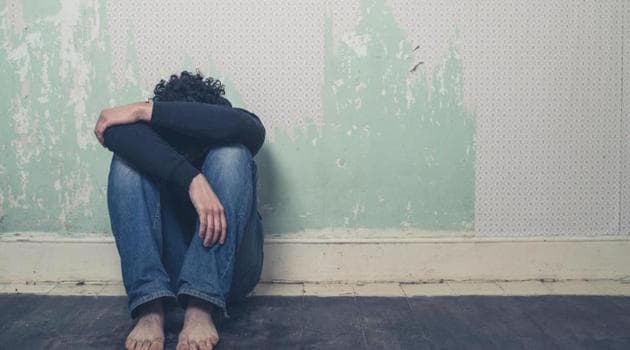Reducing suicide deaths: a collective responsibility
India has already introduced several steps towards health for all, including the launch of Ayushman Bharat and adopting a visionary mental health policy. A national suicide prevention plan is under discussion in the ministry of health and family welfare– its success will depend on policy and programmatic interventions in many different ministries
India is poised to be a global leader for change, with progress in areas like sanitation, health, renewable energy and scientific innovations. It is equally important that every citizen gets an opportunity to contribute to the economy, be happy and productive, and have a good quality of life.

The stark reality of suicides in India is evident with an age standardised suicide rate of 16.3 per 100, 000 population, compared to 10.5 per 100,000 globally. We also have the highest number of suicide deaths globally. The National Crime Records Bureau records the number at 1,33,623 suicides in 2015, but there is a lot of underreporting of suicides due to social stigma, and some estimates have put the number at twice that. Suicide was the leading cause of death in India in 2016 for those aged 15–39 years; 71.2% of the suicide deaths among women and 57.7% among men were in this age group. If the trends observed up to 2016 continue, the probability of India achieving the SDG suicide death rate reduction target in 2030 is zero.
Despite this, the issue, which particularly affects women and young people, seems to have gone unaddressed. Four out of 10 suicides worldwide among women occur in India. Though more girls are getting educated, they continue to face barriers in terms of economic opportunities. Various factors for vulnerability to suicide include domestic violence, dowry, economic dependence and other societal factors. Additionally, alcoholism plays a significant role in suicide in India, with close to 1/3 to half of male suicides occurring under the influence of alcohol, and many wives driven to suicide by their alcoholic husbands.
By 2020, India is positioned to be the youngest country in the world, with nearly half the population under 26. The loss of young lives is a loss not only to self, family but also the nation’s economic growth. The causes include pressures for academic excellence, career opportunities, personal relationships, generational divide and lack of communication.
The first step to addressing the suicide narrative is to ensure that the deaths by suicide are recorded accurately to understand the severity of the crisis. Limiting access to the choice of suicide method is a critical intervention that can be easily introduced. The most common method of suicide is by pesticide poisoning and in a project spearheaded by SNEHA in Tamil Nadu, by providing common storage lockers for pesticides, villages have become nearly suicide free. This intervention has potential for scale up, including a legislation on purchase and storage of pesticides in India.
The fact that rates of suicide are highest among young women (especially married women) is a cause for concern. The underlying social and economic causes need a long-term strategy, but immediate steps could include sensitisation of police force to take complaints of domestic violence seriously, counsellors to resolve marital disputes, and community support groups that can provide peer support. Ultimately, it is only when women feel that they have the same educational and economic opportunities as men, and truly feel that they are in a partnership of equals, are things likely to change significantly.
For young people, there is an urgent need to develop interventions to address life, coping and interpersonal skills to make them resilient and not shy to seek help when needed. Conversations should commence young, to ensure a support system to address grievances, including provisions for counselling and helplines in all schools and resilience development in the school curriculum. Some countries have introduced peer counsellors in schools with good impact; adolescents are more likely to relate to someone of their own age and background.
There are not enough mental health professionals to provide the required services at different levels of the health system. Training of physicians, nurses, ASHAs and ANMs to detect symptoms of depression or suicidal ideation in the clinic or the community, and take the necessary action (including referral and basic counselling) should be undertaken as part of the implementation of the national mental health policy. While mobile based tools to tackle depression and suicidal thoughts are being tested, there are known, evidence-based, cost-effective measures, which can be implemented now. Involvement of groups like the village health and nutrition committees, and adolescent and women’s self-help Groups (SHGs) will help raise awareness and reduce stigma. In the majority of cases, having someone to talk to at the moment of desperation can mean the difference between life and death.
India has already introduced several steps towards health for all, including the launch of Ayushman Bharat and adopting a visionary mental health policy. A national suicide prevention plan is under discussion in the ministry of health and family welfare; its success will depend on policy and programmatic interventions in many different ministries. As we close out the mental health awareness month in India, it is our collective responsibility to plan and work together to end these tragic and preventable deaths.
Soumya Swaminathan is chief scientist, World Health Organization, Geneva. This article is co-authored by Lakshmi Vijayakumar, founder of SNEHA and member of WHO’s network on suicide research and prevention, and member of the International Academy of Suicide Research and Sukriti Chauhan, lawyer with a decade of advocacy and communications expertise in public health in India and across the globe
The views expressed are personal



